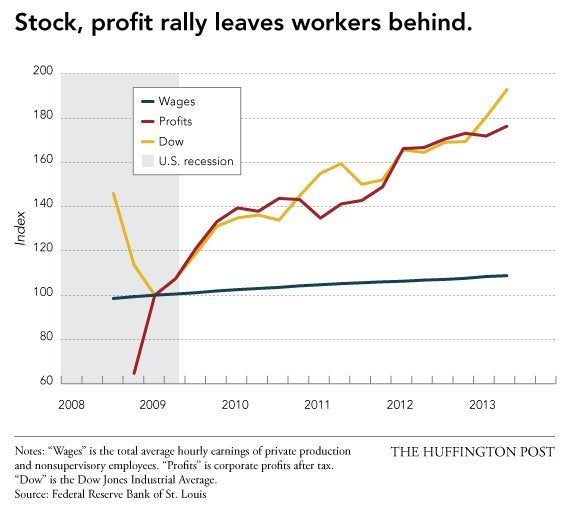An alternative method of looking at poverty has found that California has the highest rate of impoverished people in the nation, according to figures released Wednesday by the U.S. government.
The alternate calculation, which factors in taxes, noncash benefits and day-to-day costs such as child care, means that California has nearly 2.8 million more poor people than the official poverty rate shows, with nearly one in four state residents being considered poor.
The official rate released by the U.S. Census Bureau in September determined that California had some 6.2 million poor people when using a three-year average that ended in 2012. However, the bureau's alternate or supplemental poverty measure, which takes into account more factors like cost of living and public benefits, found the Golden State had nearly 9 million people living in poverty in the same period.
While more than a dozen states had a larger share of poor people than California did under the official rate, the alternate rate put California at the top of the list, followed by the District of Columbia. Under the official rate, California was tied for 14th place, with Louisiana topping the list, followed by Mississippi.
"It increases California's poverty rate by a fairly substantial amount, from 16.5 percent to 23.8 percent," said Jonathan Buttle, a research program specialist with the California Department of Finance. "It simply presents an alternative snapshot to the official number."
Not only do Californians pay one of the highest median rents in the country, the state also has a high proportion of people who are renting or own homes with mortgages, which is accounted for in the alternate measure but not in the official measure, said Kathleen Short, a U.S. Census Bureau economist.
In addition to housing, the alternate measure also considers expenses for work, medical, clothing and utilities. It also factors in noncash government benefits such as those provided by nutrition assistance programs as well as housing and energy assistance.
Nationwide, the alternate measure found that the poverty rate was 16 percent in 2012, up from the official rate of 15 percent. While that may not be a dramatic increase, certain demographic groups were significantly affected. Under the official rate, about 22 percent of children under 18 in the U.S. are living in poverty, while the alternate measure found that 18 percent are impoverished.
That's because many of the benefits that exist are targeted to families with children, such as school lunch programs and the Women, Infants and Children (WIC) nutrition program -- and those are not considered in the official poverty calculation because they are not cash benefits, Short said.
In fact, the main purpose of the alternate measure, is "to include many of the benefits that are available now to meet the needs of low-income families that weren't as important or even a part of the anti-poverty programs in the 1960s, when the official measure was designed," Short said.
Using the alternate measure, the U.S. Center on Budget and Policy Priorities found Wednesday that safety net programs cut poverty nearly in half in 2012.
But for seniors 65 years and older, the poverty rate jumped from 9 percent to 15 percent under the alternate measure. That's largely because the alternate rate considers out of pocket medical expenses, which are quite high for seniors, Short said.
The U.S. Census Bureau isn't the only agency to have created a new way to measure poverty. In October, the Public Policy Institute of California and the Stanford Center on Poverty and Inequality released the "California Poverty Measure: A New Look at the Social Safety Net," which is "very similar in spirit" to the Census Bureau's supplemental poverty measure, said Caroline Danielson, a co-author of the report and a research fellow at the institute. While the California Poverty Measure also accounts for regional variation in the cost of living and the impact of social programs, it uses a much larger sample and uses one year instead of three years of data, Danielson said.
Under that measure, about 22 percent of California residents were living in poor families in 2011, compared to the official poverty rate of 16 percent.
Poverty has been tracked since the 1960s to help distribute government resources and determine eligibility for programs like school lunches and food stamps, she said. But it's also useful to know whether parts of the population are not able to make ends meet, she said.
"The official poverty statistics do the first well but they don't do the second very well and so, that's what our measures are designed to do, provide us a better sense of the material well-being, the ability economically of a family to have a budget that stretches to meet their basic needs month to month," she said.
That's valuable information for policymakers to determine how effective is the nation's safety net and where perhaps it could be strengthened, she said. ___
(c)2013 the Daily News (Los Angeles)
Visit the Daily News (Los Angeles) at www.dailynews.com
Distributed by MCT Information Services
